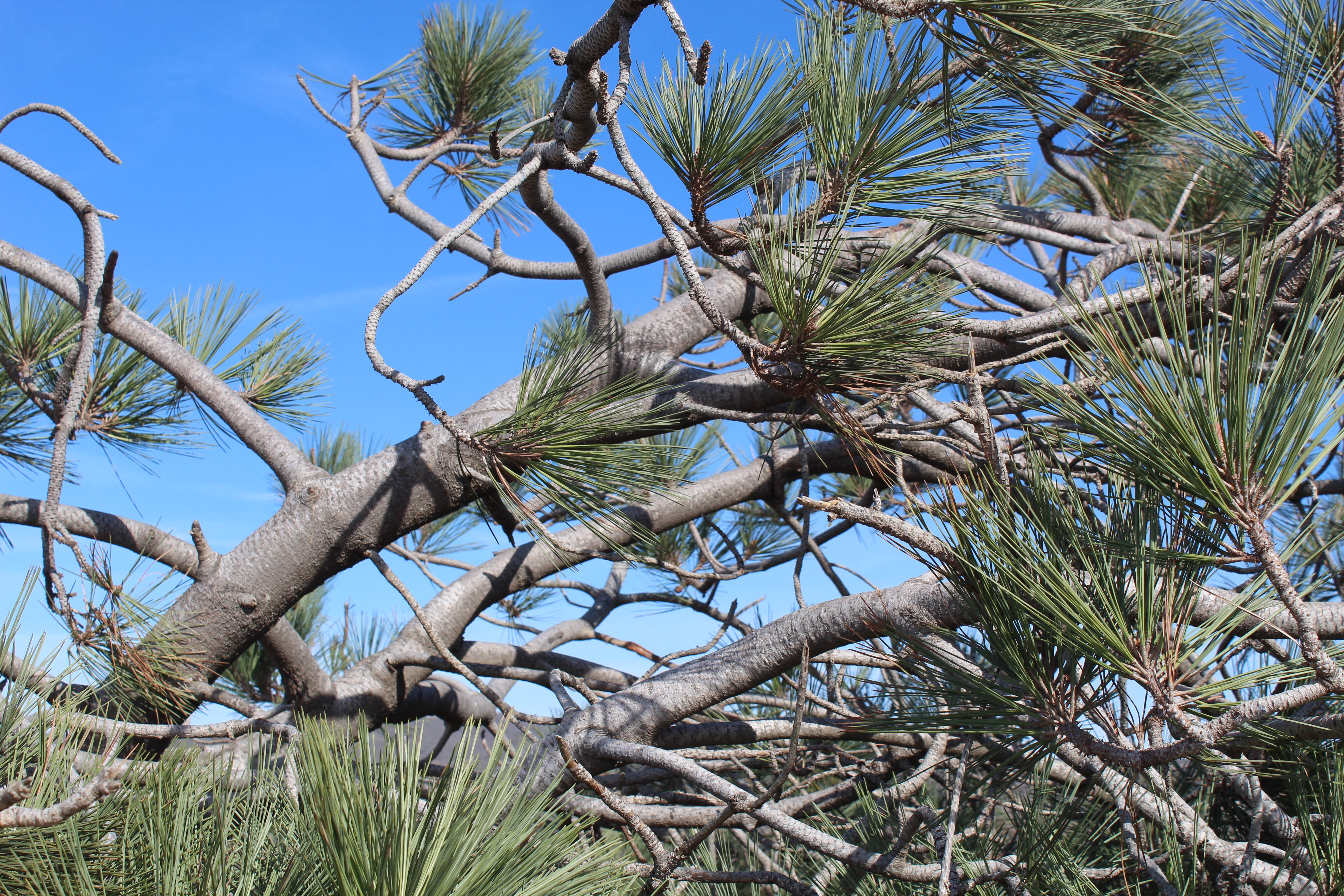Torrey pine
(Pinus torreyana)

Description
The Torrey pine, Pinus torreyana, is a rare pine species in California, United States. It is a critically endangered species growing only in San Diego County in the Torrey Pines State Natural Reserve and the coastal town of Del Mar to the immediate north, and on Santa Rosa Island and San Miguel Island, offshore from Santa Barbara in Santa Barbara County. The Torrey pine is endemic to the California coastal sage and chaparral ecoregion. The species epithet torreyana is named for John Torrey, an American botanist, after whom the coniferous genus Torreya is also named. Pinus torreyana is a broad, open-crowned pine tree growing to 8–17 meters (26–56 ft) tall in the wild, with 25–30 centimeters (9.8–11.8 in) long leaves ('needles') in groups of five. The cones are stout and heavy, typically 8–15 cm (3.1–5.9 in) long and broad, and contain large, hard-shelled, but edible, pine nuts. Like all pines, its needles are clustered into 'fascicles' that have a particular number of needles for each pine species; in the Torrey pine there are five needles in each fascicle. Like all pines, it has strobili, structures that function as a flower but look like a small cone, which for the Torrey pine look like a yellow bud in a male strobilus and like a small red cone in a female. Torrey pines are sometimes afflicted with witch's broom (or "gorilla's nest"), an unusually dense cluster of needles that looks somewhat like a bird's nest, caused by disease or other causes. There are two subspecies or varieties. These are said to be distinguished by the following characteristics, as well as possibly differing in the terpenoid (beta-phellandrene, limonene, cineole, etc.) profile. The extant population of Pinus torreyana is restricted to trees growing in a narrow strip along the Southern California coast in San Diego. There is also a population of the variety Pinus torreyana var. insularis in two groves on Santa Rosa Island, a California Channel Island off the coast of Santa Barbara. The presence of Torrey pines along the semi-arid coast of San Diego and Santa Rosa Island (rainfall less than 15 inches per year) is probably a relict population of a much more extensive Ice Age distribution. Coastal fog during spring and summer along the San Diego and Santa Rosa Island coast provides just enough moisture to supplement the fairly low winter rainfall, allowing for survival of the species in the wild habitat zone.
Taxonomic tree:







